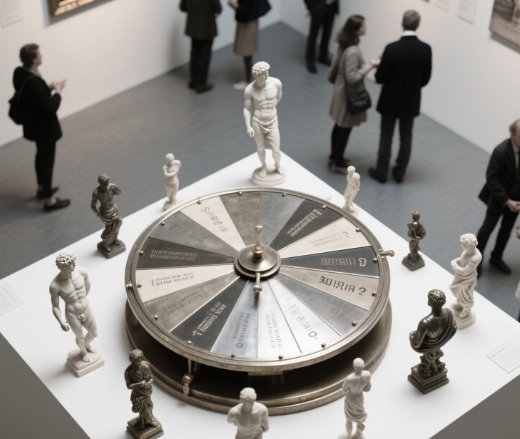Art history is a vast and fascinating realm, spanning centuries and continents, filled with masterpieces, iconic artists, and intriguing stories. But diving into this world can sometimes feel overwhelming, with countless movements, styles, and names to remember. That’s where the art history trivia wheel comes in—a creative and interactive tool that transforms learning into an exciting game. Whether you’re a student, an art enthusiast, or someone looking to expand their knowledge in a fun way, this trivia wheel is a gateway to discovering the wonders of art history.
The Magic of Interactive Learning
Gone are the days of dull, passive learning from textbooks. The art history trivia wheel brings education to life through interactivity. As you spin the wheel, you never know which art-related question you’ll land on, adding an element of surprise and anticipation. This unpredictability not only keeps you engaged but also enhances memory retention. When you’re actively involved in the process of answering questions, your brain is more likely to store the information for future recall.
Consider a wheel that includes questions about the Renaissance, one of the most pivotal periods in art history. You might land on a question about Leonardo da Vinci’s Mona Lisa—Why is her smile so mysterious? Or what techniques did da Vinci use to create such a lifelike portrait? Spinning again could lead you to a question about Michelangelo’s Sistine Chapel ceiling—How long did it take him to paint those iconic frescoes? What stories do they tell? Each question prompts you to think, research, and explore, making the learning experience dynamic and enjoyable.

A Journey Through Time and Cultures
The beauty of an art history trivia wheel is its ability to cover a wide range of topics, taking you on a journey through different eras and cultures. From the ancient art of Egypt, with its towering pyramids and intricate hieroglyphs, to the vibrant street art of today, the wheel can be designed to include questions from every corner of the art world.
Think about the Baroque period, known for its dramatic use of light and emotion. A question might ask about Caravaggio’s The Calling of Saint Matthew—How does the artist use light to draw the viewer’s attention to the central figure? Or in the realm of Asian art, you could encounter a question about Japanese ukiyo-e prints—Who were the famous artists of this style, and what themes did they depict? By exploring these diverse topics, you gain a deeper appreciation for the richness and variety of art throughout history.
For All Levels of Art Lovers
One of the great advantages of the art history trivia wheel is its versatility. It can be adapted to suit different levels of knowledge, making it accessible to both beginners and those with more advanced understanding. For someone new to art history, the wheel might feature basic questions about well-known artists and their masterpieces. As you become more familiar with the content, the questions can become more complex, delving into art theories, lesser-known works, and the cultural contexts that influenced artists.
Teachers can use the trivia wheel in the classroom to make lessons more engaging, encouraging students to participate and compete in a friendly way. Art enthusiasts can use it as a solo activity to test their knowledge or as a group game with friends, sparking interesting conversations and debates about art. Even casual learners who simply want to explore art in their free time will find the trivia wheel a delightful companion.
Making the Most of Your Trivia Wheel
To get the most out of your art history trivia wheel experience, consider combining it with other learning resources. After answering a question, take the time to look up more information about the topic—view images of the artworks, read biographies of the artists, or watch documentaries about the art movements. This will deepen your understanding and make the knowledge more meaningful.
You can also set goals for yourself, such as focusing on a specific period or region each week and using the trivia wheel to reinforce what you’ve learned. If you’re using the wheel with others, create a friendly competition, awarding points for correct answers and challenging each other to learn more.
Conclusion
The art history trivia wheel is more than just a game; it’s a powerful tool for exploring the rich tapestry of art history. It makes learning interactive, engaging, and fun, suitable for people of all ages and knowledge levels. Whether you’re spinning to test your knowledge, learn something new, or simply enjoy the process of discovery, this trivia wheel opens the door to a world of artistic wonders.
At SpinTheWheel, we’re passionate about creating innovative tools that make learning and entertainment more exciting. Our art history trivia wheel is designed with care to provide a high-quality, engaging experience. So why not give it a spin? Explore the fascinating world of art history in a whole new way, and let the trivia wheel guide you on an unforgettable journey. Visit SpinTheWheel today to discover how our products can enhance your learning and entertainment experiences.